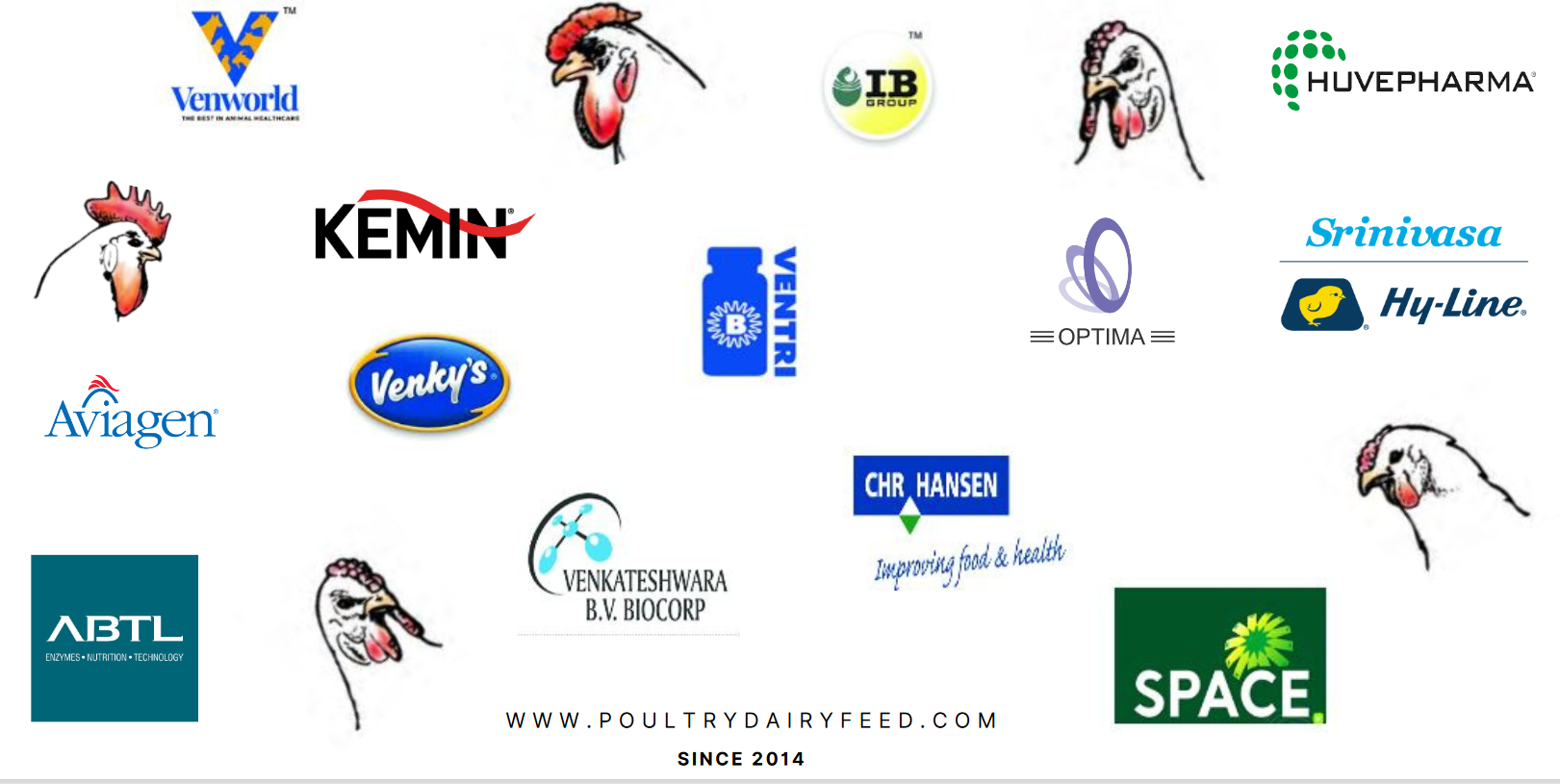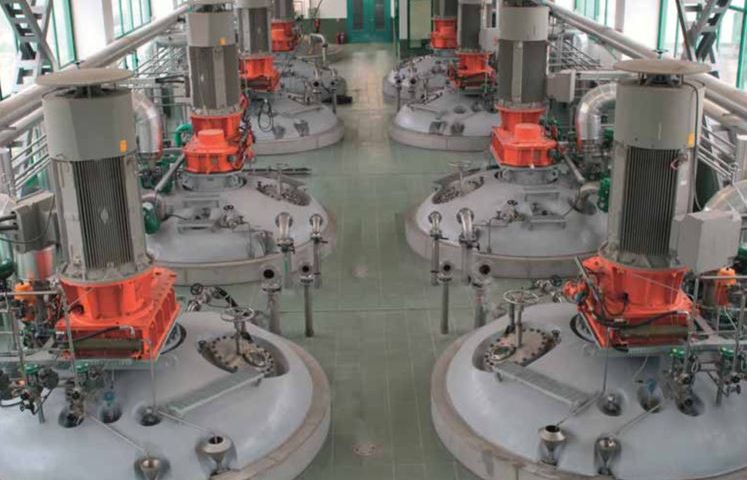NINAD BHATT
PhD Research Scholar, LPM Division
National Dairy Research Institute, India
Specific Pathogen Free (SPF) animals are those which are free of specified micro-organism and parasites but not necessarily free of the ones which are not specified. An animal stock or strain derived by aseptic caesarean section (or sterile hatching of eggs) which are reared and continuously maintained with germfree techniques is referred to as SPF. SPF animals are also known as disease free animals, healthy animals, pathogen free animals, clean animals, caesarean derived animals.
What is the need of SPF?
To break the cycle of the some of the infectious disease organism that are commonly transmitted from animal to animal. Provide more uniform experimental animal for many phase of basic and applied research by reducing one of the variables diseases.
Care and management of specific pathogen free flocks
1. Isolators for SPF poultry flocks
Stainless steel, fiber glass isolator cabinets are used for housing SPF flocks. Isolators increase the microbiological security of a flock by reducing direct contact between poultry and the operator. Isolators reduce the risk of total loss through sub-division of the flocks. The design should have facilitate for proper waste-disposal, lighting, nest box and watering systems
2. Working staff
Ideally only the caretaker enters the house throughout the whole life cycle. All standard maintenance and repair work are done when the house is empty. The caretaker must enter the house through double barriers:
- The first barrier requires a change from street clothes and shoes into farm owned clothes and boots
- The second barrier before entering the SPF-house requires a complete change to house specific clothes after a shower with hair wash
3. Veterinary rounds
The veterinarian staff should make a regular round to observe flocks, their housing conditions and husbandry procedures. All birds in SPF care are observed daily by an animal care staff A separate area is assigned to a veterinary technician and an area veterinarian.
4. Feeding and watering
The feed is produced using an effective heat treatment system.Only few selected raw materials from authentic sources are used. The commonly used feeds are corn, wheat, soybean meal, vegetable fat plus vitamin and mineral premixes. Feed decontamination is done by heating (85°C for 6 minutes minimum) and the addition of an acid mix after cooling.Fat and vitamins are added after the heat treatment and need to be decontaminated separately. The vitamin premix are irradiated with 15 kgy minimum dose prior to being transported to the mill.The bags are emptied into a container in the HEPA-filtered section of the feed mill through sterile stainless steel tubes. Fat and vitamins are added to the feed in the second mixer located in the overpressure ventilated area of the mill. This mixer serves as dryer and cooler as well as final mixer for the mash feed. The process air for drying and cooling and also the air to overpressure ventilate the cooling and finished feed storage bins is HEPA-filtered.
5. Feed delivery
An important concept of the feed supply is clean delivery. A tanker type vehicle is used to deliver the feed into a storage building close to the production sites. The delivery vehicles have been thoroughly cleaned and disinfected during the weekend. Regular tests are performed internally and by an independent laboratory. Gamma irradiation is the most reliable method of decontamination of feed but very costly.Fumigation with methyl-bromide, ethylene oxide can also be used.
6. Manure handling and removal
All the SPF flocks are kept in family cages with manure belts. The manure is removed once or twice a week, using a specially designed screw augers.These augers have a double shut-off system to ensure that there is no backflow of material into the house. Also that no rodents or other potential disease carriers can enter the house.
7. Material transfer in house
All material brought inside SPF house is disinfected before the placement of day-old chicks. Dead animals and eggs must pass through a disinfection chamber with an effective fumigation. All the outgoing material is fumigated and the emptied chamber is fumigated again before the chamber can be opened again from the clean side.
8. Air filtration
All air delivered inside the house must be filtered before entering the house. The currently followed system is a three filter steps.Supply air is drawn from outside by fans and filtered in several stages, beginning with 5 µm pre-filter with 90% efficiency. The last step is a HEPA–filter which filters out 99.95 % of all the particles in the air. Finally a high efficiency particulate air filter which excludes 0.3 µm diameter particles with at least 99.99% efficiency.A filtered air, positive pressure (FAPP) system is designed to avoid false air entering the house. The FAPP system has a active ventilation elements on the exhaust side to avoid wind pressure into the house and to keep off insects. All filters are exchanged before a new flock is placed and are checked for leaks with a particle counter
9. Pest Control
All the SPF– houses are equipped with rodent traps along their walls at a distance of only 3 m from each other. After depopulating the house, a very intensive pest control program must be carried out inside the house.
10. Production of SPF eggs
SPF eggs are free from the vertically transmitted agents namely Avian Adenovirus, Avian encephalomyelitis virus, Reo viruses, Lymphoid leukosis, Reticuloendotheliosis, Mycoplasma gallisepticum, etc.The eggs are incubated in a totally controlled sterile environment until hatching. From day one, the SPF flocks used for production of SPF eggs are reared under totally controlled sterile ambience in SPF farm. These farms have high-tech infrastructure maintained under filtered air positive pressure (FAPP). The birds are fed with feed and water that is suitably treated to avoid introduction of any undesirable microorganisms.
11. Quality control to asses SPF status
Other than the visible inspection of egg quality, the SPF status of each flock has to be guaranteed at all times during production to ensure the minimum standards. At present, there are various different diseases, of which absence of antibodies or antigens has to be demonstrated by validated, approved testing protocols. During the rearing period 5% of the birds have to be tested twice, during the production period 5% on a monthly basis (or 1.25% weekly).
12. Testing for a newly introduced flocks
Whenever a new flock is derived exclusively from a fully established SPF flock, the new generation is tested prior to designate it as SPF. Along with the monitoring of the general health and performance of the flock, further specific testing from the age of 8 weeks is required. Tests are performed on 2 to 5 per cent samples of the flock (minimum 10, maximum 200 birds) taken with an interval of at least 4 weeks between the ages of 12-16 weeks and 16-20 weeks.
13. Routine test operation in SPF flocks
Clinical examination is carried out at least once per week. The testing is done to verify that the birds are free from fowl-pox virus and signs of any other infection. If mortality exceeds 0.1 per cent per week, necropsy is performed on all available carcasses. Caecal contents of all available carcasses are examined microbiologically for the presence of Salmonella, etc.
14. Action taken during detection of infection
For slow spreading infection, all materials derived from the flock during the 4-week period are considered unsatisfactory.For fast spreading infection, all materials derived from the flock during the 2-week period are considered unsatisfactory. Any product derived from such SPF material must be discarded. Quality control tests conducted using the above materials are invalid.Producers must notify users of all eggs about evidence of contamination as soon as possible following the outbreak. Any flock in which an outbreak of any specified agent is confirmed may not be redesignated as an SPF flock. Any progeny derived from such flock during or after the 4-week period prior to the last negative sample being collected may not be designated as SPF
15. Biosecurity
Good biosecurity begins with personal cleanliness. Showering or washing facilities and supplies should be regularly provided. Personnel working should not be permitted to eat, drink, apply cosmetics, or use tobacco in animal room. Animal care staff should maintain a high standard of biosecurity to protect the animals from pathogenic organisms that can be transferred by humans. Personnel should not leave the work place in protective clothing that has been worn.
16. Screening the SPF animal
Serological examination : Each SPF room will have serology test conducted every 3 months. The serum test will be done annually by a basic panel. The infected animals will be immediately treated or discarded
Routine screening procedures – Swabs from the surface of the walls and floors of the breeding unit and samples of the filtered water supply and of the ‘dunk’ tank fluid are taken four times at weekly intervals. These are examined for the number and type of organisms present. Salmonella, Mycobacterium, Bordetella, Pasteurella, Mycoplasma and Corynebacterium.
Hazardous wastes – That are toxic, carcinogenic, flammable, corrosive, reactive substance. They must be disposed of as recommended by occupational health and safety specialists
Record keeping- Record keeping is important for animal house plans which includes typical floor plans, all fixtures etc. Breeding stock, purchases and sales records, minutes of institute animals ethics committee meeting, records of sick animals, death records





